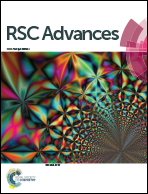Studies of membrane fouling mechanisms involved in the micellar-enhanced ultrafiltration using blocking models
Abstract
Micellar-enhanced ultrafiltration (MEUF) is a promising technology to remove organic contaminants from wastewater. A laboratory experiment was carried out to study the performance of four Gemini surfactant systems (CG12, CG16, CG12 + Brij35, CG16 + Brij35) for treating synthetic wastewater. The results show that CG16–Brij35 possesses the lowest flux behavior and the best rejection efficiencies toward phenol and surfactants. Pore blocking models are utilized to estimate membrane fouling of surfactant systems. For CG12 and CG12 + Brij35 systems, internal pore blocking, intermediate pore blocking and cake formation models occur simultaneously. Internal pore blocking and cake formation are the main fouling mechanisms of CG16 micelles. With respect to CG16–Brij35, cake layer is the main type of fouling mechanism. The increased pore blocking degree follows the order of CG12 < CG16 < CG12 + Brij35 < CG16 + Brij35. Furthermore, SEM, ATR-FTIR and a mercury porosimeter are used to analyze membrane surface morphology, membrane material characteristics and membrane fouling layer, as well as examine and verify fouling mechanisms. Due to high flux behavior, excellent phenol rejection and low membrane fouling, CG12 is a more desirable selection. Studies output helps to understand the fouling mechanism of MEUF in the presence of Gemini surfactants, and gave valuable evidence to optimize operation strategies.


 Please wait while we load your content...
Please wait while we load your content...